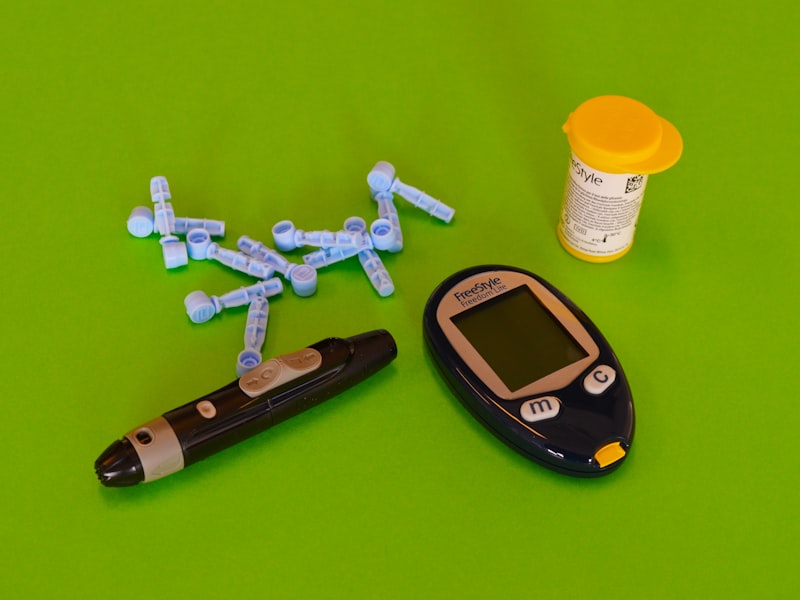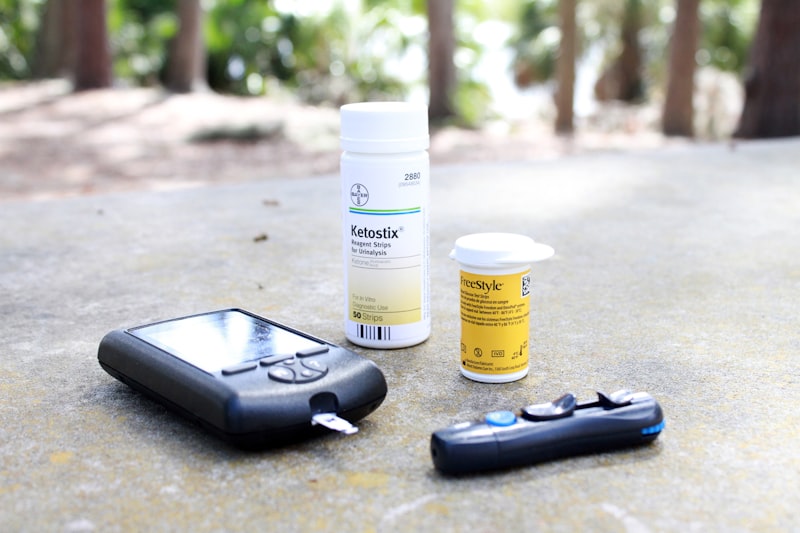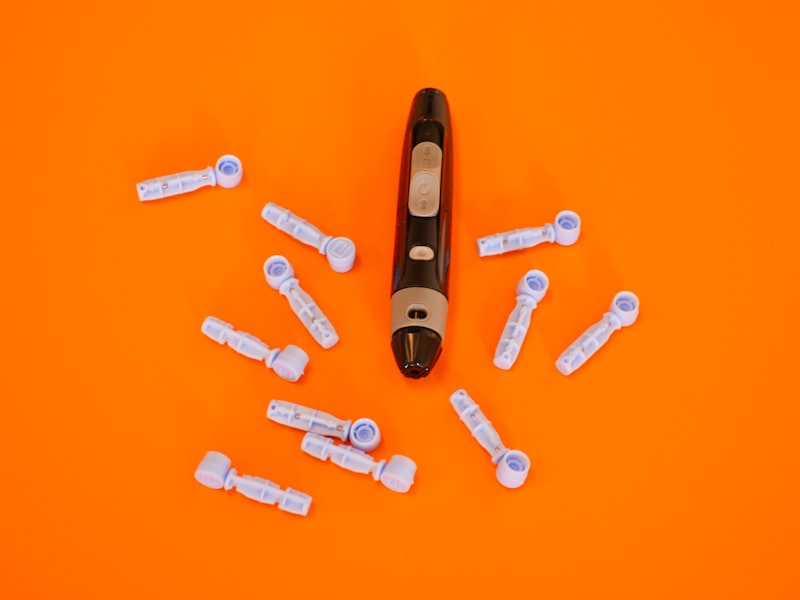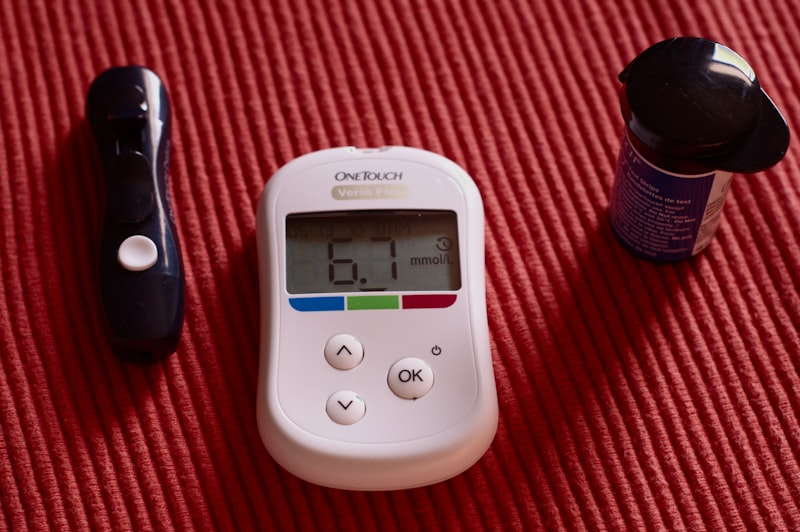Type 1 diabetes is often diagnosed in childhood or adolescence, where the immune system mistakenly attacks insulin-producing cells in the pancreas. This requires daily insulin injections to maintain blood sugar levels within a healthy range. On the other hand, Type 2 diabetes typically develops later in life, often linked to lifestyle factors such as poor diet and lack of exercise. It initially presents as insulin resistance, where the body’s cells fail to respond adequately to insulin, leading to elevated blood sugar levels.
Managing diabetes effectively involves a multifaceted approach. Monitoring blood sugar levels regularly is crucial, akin to checking the fuel gauge in a car to ensure it runs smoothly. This can be done through simple finger-prick tests or continuous glucose monitors, providing real-time data for informed decision-making.
Diet plays a pivotal role in diabetes management. Think of food as fuel: choosing complex carbohydrates like whole grains and vegetables over simple sugars helps stabilize blood sugar levels. Portion control and mindful eating are key strategies, much like balancing the ingredients in a recipe for the perfect dish.
Exercise acts as the engine that drives insulin sensitivity. Physical activity helps muscles absorb glucose from the bloodstream, lowering blood sugar levels naturally. It’s like giving your body a daily tune-up, ensuring everything runs efficiently.
Medication, including insulin injections or oral medications, may be prescribed based on individual needs. Think of these medications as tools in a toolkit, each serving a specific purpose to maintain optimal health.
Understanding diabetes empowers individuals to take charge of their health. By treating the body like a well-loved vehicle—nurturing it with balanced nutrition, regular exercise, and appropriate medical interventions—we can navigate the road of life with confidence and vitality.
Decoding Diabetes: A Comprehensive Guide to Types, Symptoms, and Treatment Options
There are primarily two types of diabetes: Type 1 and Type 2. Type 1 diabetes is an autoimmune condition where the body’s immune system mistakenly attacks insulin-producing cells in the pancreas. This results in little to no insulin production, necessitating daily insulin injections for survival. On the other hand, Type 2 diabetes, more common among adults but increasingly diagnosed in children, occurs when the body becomes resistant to insulin or doesn’t produce enough insulin to maintain normal blood glucose levels. It is often linked to lifestyle factors such as obesity, lack of physical activity, and poor diet.
Recognizing the symptoms of diabetes can lead to early diagnosis and effective management. Common symptoms include excessive thirst, frequent urination, sudden weight loss (in Type 1), blurred vision, fatigue, and slow wound healing. These signs should prompt individuals to seek medical advice for proper evaluation and diagnosis.
Treatment for diabetes aims to control blood glucose levels effectively to prevent complications. For Type 1 diabetes, insulin therapy is essential, typically administered through injections or an insulin pump. Type 2 diabetes management may involve lifestyle modifications such as adopting a healthy diet, increasing physical activity, monitoring blood sugar levels, and sometimes, oral medications or insulin therapy.
Understanding the nuances of diabetes types, recognizing symptoms early, and adhering to personalized treatment plans are pivotal in managing this chronic condition. By staying informed and proactive, individuals can lead fulfilling lives while effectively managing diabetes.
Mastering Diabetes: Essential Tips for Effective Management and Control
Firstly, understanding your body’s response to food is crucial. Opt for a balanced diet rich in fiber, lean proteins, and healthy fats. Incorporating leafy greens, whole grains, and nuts can help regulate blood sugar spikes. Experiment with portion sizes and meal timings to find what works best for you.
Secondly, regular physical activity plays a pivotal role in diabetes management. Engaging in exercises like brisk walking, swimming, or cycling helps lower blood sugar levels and improves insulin sensitivity. Aim for at least 30 minutes of moderate activity most days of the week.
Thirdly, monitoring blood sugar levels consistently is essential. Use a glucometer to track readings throughout the day, especially before and after meals, and keep a log to identify patterns. This data empowers you and your healthcare provider to adjust treatment plans accordingly.
Additionally, medication adherence is crucial for many individuals with diabetes. Whether you’re prescribed oral medications or insulin injections, taking them as directed helps stabilize blood sugar levels and prevent complications.

Moreover, managing stress effectively can positively impact diabetes control. Stress hormones can elevate blood sugar levels, so incorporating relaxation techniques like deep breathing, meditation, or yoga into your daily routine can be beneficial.
Furthermore, staying informed about diabetes through reputable sources and regular check-ups with healthcare providers ensures you’re equipped with the latest information and personalized advice.
Beyond Blood Sugar: Lifestyle Changes That Impact Diabetes Management
Exercise isn’t just for athletes or gym buffs—it’s a game-changer for managing diabetes. When you engage in physical activity, your muscles become more sensitive to insulin, which helps them absorb glucose and use it for energy. Whether it’s a brisk walk, a yoga session, or hitting the weights, finding an exercise routine you enjoy can make a world of difference in controlling your diabetes.

Speaking of insulin sensitivity, let’s talk about diet. It’s not just about what you eat, but how and when you eat it. A balanced diet rich in fiber, lean proteins, and healthy fats can help stabilize blood sugar levels throughout the day. Ever noticed how eating a sugary snack makes your blood sugar spike? Making smarter food choices can help prevent those rollercoaster highs and lows.
Stress might seem like a part of everyday life, but it can wreak havoc on your blood sugar levels. When you’re stressed, your body releases hormones like cortisol and adrenaline, which can cause blood sugar to rise. Finding ways to manage stress, whether it’s through meditation, deep breathing, or even just taking time for yourself, can help keep your diabetes in check.
Sleep—it’s not just for beauty. Getting enough quality shut-eye is crucial for managing diabetes. Poor sleep can affect your body’s ability to use insulin effectively and can lead to cravings for unhealthy foods. Aim for 7-9 hours of sleep per night and try to maintain a regular sleep schedule to support overall diabetes management.
Remember, managing diabetes isn’t just about what happens in the doctor’s office or at the pharmacy. It’s about the everyday choices you make that can add up to better health and well-being. By focusing on exercise, diet, stress management, and sleep, you can take control of your diabetes and live a healthier, more vibrant life.
Innovations in Diabetes Care: Latest Technologies and Treatment Breakthroughs
Diabetes care is undergoing a revolution with cutting-edge technologies and breakthrough treatments paving the way for better management and improved quality of life. Innovations in diabetes care are not just about monitoring blood sugar levels anymore; they encompass a holistic approach to health management.
One of the most promising advancements is the development of continuous glucose monitoring (CGM) systems. These devices provide real-time glucose readings, allowing individuals with diabetes to track their levels throughout the day without the need for frequent finger pricks. Imagine having a tiny sensor that wirelessly transmits data to your smartphone, providing insights that help you make immediate decisions about diet, exercise, and insulin dosages.
Another groundbreaking innovation is the artificial pancreas, also known as closed-loop insulin delivery systems. This technology combines CGM with an insulin pump that automatically adjusts insulin delivery based on real-time glucose readings. It mimics the function of a healthy pancreas, responding to fluctuations in blood sugar levels, thereby reducing the risk of hypoglycemia and hyperglycemia.
Beyond devices, there are exciting developments in drug therapies. New classes of medications such as SGLT-2 inhibitors and GLP-1 receptor agonists not only help control blood sugar but also offer cardiovascular benefits, weight loss, and renal protection. These drugs represent a shift towards personalized medicine, tailoring treatments to individual needs and health profiles.
Moreover, the field of regenerative medicine holds promise for potential cures. Researchers are exploring stem cell therapies and pancreatic islet cell transplantation as ways to restore insulin production in individuals with type 1 diabetes, aiming for long-term remission or even reversal of the disease.
As technology continues to evolve, so does the outlook for diabetes management. Each innovation brings us closer to more effective, less invasive, and ultimately transformative approaches to living with diabetes. The future holds immense possibilities for those navigating the complexities of diabetes care, promising a brighter and healthier tomorrow.
Personal Stories of Triumph: How Individuals Successfully Manage Diabetes
Take Sarah, for instance. Diagnosed with type 1 diabetes at a young age, Sarah initially struggled to cope with the demands of her condition. Daily insulin shots, strict dietary restrictions, and the fear of complications loomed large. However, instead of letting diabetes define her, Sarah chose to take charge. She educated herself about nutrition, discovered the importance of regular exercise, and embraced technologies like continuous glucose monitors. Today, Sarah not only manages her diabetes effectively but also advocates for awareness in her community.
Then there’s James, diagnosed with type 2 diabetes in his mid-40s. Initially shocked by the diagnosis, James realized he needed a lifestyle overhaul. He swapped sugary treats for whole foods, traded sedentary evenings for brisk walks, and found solace in mindfulness practices. James’s journey wasn’t easy, but each small victory—lowered blood sugar levels, fewer medications—became a testament to his resilience.
What drives these individuals to persevere? It’s the realization that diabetes management isn’t just about following doctor’s orders; it’s about reclaiming control over one’s health and future. Their stories remind us that triumph over diabetes isn’t measured solely by medical metrics but by the daily choices we make.

These personal narratives are more than just anecdotes—they’re beacons of hope for others navigating similar paths. They show that with the right mindset and support, living well with diabetes is not only feasible but can lead to a life filled with vitality and purpose.
Diabetes Diet Demystified: Crafting a Balanced Meal Plan for Blood Sugar Control
Firstly, focus on incorporating complex carbohydrates that are high in fiber. These include whole grains like oats, quinoa, and brown rice. Fiber slows down the absorption of sugar into the bloodstream, preventing spikes. Imagine fiber as a sponge that soaks up excess sugar, keeping your levels steady throughout the day.

Next, embrace the power of lean proteins. Foods like chicken, turkey, tofu, and legumes provide essential nutrients without causing rapid spikes in blood sugar. Think of proteins as the building blocks that help stabilize your energy levels, ensuring you feel satisfied after meals.
Don’t forget the importance of healthy fats. Avocados, nuts, seeds, and olive oil are rich in monounsaturated fats, which can improve insulin sensitivity. These fats act like lubricants for your cells, ensuring they function smoothly without clogging up the works.
Vegetables are your allies in the battle against diabetes. They are packed with vitamins, minerals, and antioxidants while being low in calories and carbohydrates. Leafy greens, broccoli, and bell peppers are not just colorful additions to your plate but also powerhouse nutrients that support overall health.
Lastly, moderation is key when it comes to fruits and sweets. Opt for fruits that are lower in sugar content such as berries, apples, and citrus fruits. When indulging in desserts, choose small portions of sugar-free or low-sugar alternatives to satisfy your sweet tooth without causing havoc on your blood sugar levels.
By constructing your meals with these principles in mind, you can create a diabetes diet that is both delicious and beneficial. Remember, consistency and balance are the cornerstones of managing diabetes effectively. With thoughtful planning and mindful eating, you can take charge of your health and enjoy a vibrant lifestyle.
The Role of Exercise in Diabetes Management: Strategies for Optimal Health
Firstly, why does exercise matter for people with diabetes? When you’re active, your muscles use glucose for energy, which helps to lower blood sugar levels. This is particularly beneficial for individuals with diabetes, as it can improve insulin sensitivity and reduce the risk of complications over time. Moreover, regular exercise contributes to weight management, another key factor in diabetes control. By maintaining a healthy weight, you can better regulate blood sugar levels and decrease reliance on medications.
Now, let’s talk about the types of exercise that are most beneficial. Aerobic exercises such as walking, jogging, swimming, or cycling are excellent choices because they get your heart pumping and can lower both blood sugar and insulin resistance. Aim for at least 150 minutes of moderate-intensity aerobic activity per week, spread out over several days. Additionally, resistance training, like lifting weights or using resistance bands, helps build muscle mass. More muscle means more glucose uptake, which can lead to better blood sugar control.
It’s essential to personalize your exercise routine to fit your lifestyle and preferences. Find activities that you enjoy and can realistically incorporate into your daily life. Whether it’s dancing, gardening, or playing a sport, the key is consistency. Consistent physical activity is what yields long-term benefits for diabetes management.

Remember, though, that exercise and diabetes management go hand in hand with proper nutrition and medication adherence. Monitor your blood sugar levels before and after exercise to understand how your body responds. Stay hydrated and be mindful of any signs of hypoglycemia (low blood sugar) or hyperglycemia (high blood sugar) during and after physical activity.
Exercise is a cornerstone of diabetes management. It improves blood sugar control, enhances insulin sensitivity, aids in weight management, and boosts overall well-being. By incorporating regular physical activity into your daily routine and making it a priority, you can take significant strides towards optimal health with diabetes. So, lace up those sneakers, find what moves you, and embrace the transformative power of exercise in managing diabetes effectively.
Frequently Asked Questions
What are the risks associated with diabetes complications?
Learn about the potential risks and complications linked to diabetes, including cardiovascular issues, nerve damage, kidney problems, and eye disorders. Understand how managing blood sugar levels and leading a healthy lifestyle can help reduce these risks.
What are the early signs and symptoms of diabetes?
Learn about the early signs and symptoms of diabetes, including frequent urination, excessive thirst, unexplained weight loss, increased hunger, fatigue, blurred vision, and slow-healing wounds. Recognizing these signs early can lead to timely medical intervention and management.
How can diet and exercise help manage diabetes?
Learn how proper diet and regular exercise play crucial roles in managing diabetes effectively. Discover practical tips and strategies to control blood sugar levels and improve overall health through lifestyle changes.
How often should blood sugar levels be monitored?
Learn how frequently you should monitor your blood sugar levels to maintain optimal health and manage diabetes effectively.
What are the different types of diabetes?
Learn about the various types of diabetes, including type 1, type 2, and gestational diabetes. Each type has distinct causes and treatments, impacting how the body processes glucose. Understanding these differences is crucial for managing diabetes effectively.


